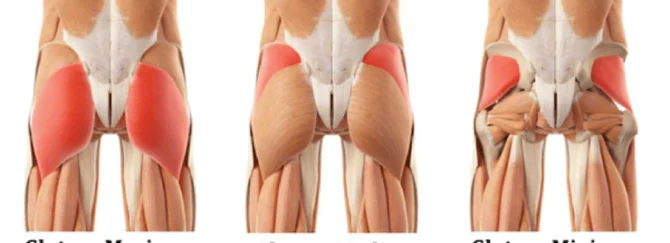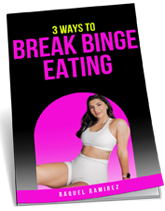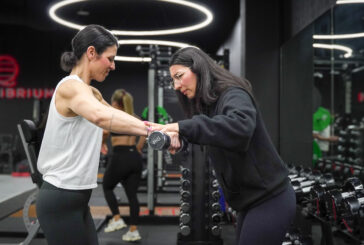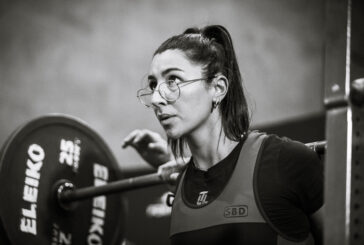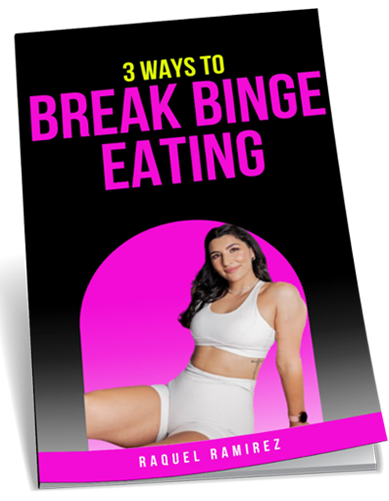It’s not just a Kardashian fashion trend of big butt implants … NO! It’s a phenomenon of women learning how to grow a booty – THICK and round in the gym!
This isn’t a FAD and there’s actually a lot of science to support training glutes in relation to posture, back pain management, speed and power athletes (have you seen sprinters butts!!), and of course self-confidence.
Glute training has been successful for so many women, it’s fun to train and when a woman has her mind set on something, especially round glutes, there’s nothing getting in the way of her. This is why we love helping our women focus on this because it takes away from trying to ‘get skinny’ and always ‘losing weight’, the focus on building a body part is far more rewarding, and as a result body fat naturally changes.
A problem we see a lot is that women are overtraining glutes with the wrong exercises and not eating enough to grow them.
That’s why we’re here to break it down for you and tell you the main points that will be beneficial in your training and growing glute journey.
First of all, let’s talk about the 3 areas in the glutes that we need to target, we call these areas the Gluteus Maximus, Gluteus Medius, and the Gluteus Minimus, as seen below.

We need to make sure to target all 3 areas in the glutes to see optimal glute growth occur.
We have created an 8-week training guide that will provide you with the best of it all including
- Hitting all 3 areas (of the glutes) in the best way possible for the best results
- Progressive Overload
- Training intensity
- Training frequency
- Eating for glute growth
How many days are recommended to see glute growth?
Typically 3x per week is what we recommend, however, this also depends on these factors:
- the level of training experience you have
- how many days you can actually train in a week
- how well you recover from training
- and again, how much food do you eat (can you see a theme here?)
It’s also important to note that everyone’s hip structure is different. SO, you may see different shapes of glutes! This is normal, just know that your hip structure plays a partial role in what your glutes will look like.
See image
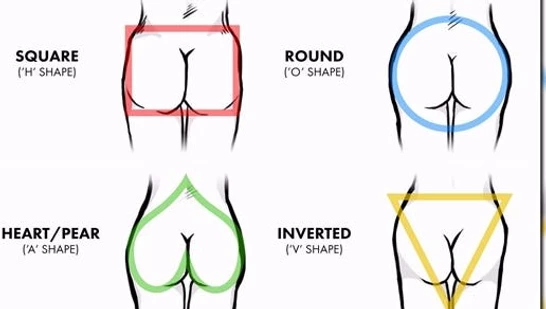
I feel my quads in a hip thrust… why is that?
When done incorrectly you will notice a lot of things don’t feel ‘right’.
- The bench might be the wrong height for you (i/e too small or too high) so your back won’t feel comfortable on the bench
- If it’s too challenging to get the bar on your hips and on the bench getting into your starting position will be very uncomfortable AND if loaded with more weight than you’re used to this may make it more challenging to get into your foot position
- Foot position will determine if you’re hitting glutes, quads, or hamstrings!
BEST FOOT POSITION for hip thrusts = feet at 90 degrees of your knees
What exercises should I be doing to see results?
Honestly, there are so many variations of exercises to incorporate in your training, to break it down and make it simple we love to incorporate any kind of Hip Thrust, which allows you to go into full hip extension which trains the Glute Max.
When performing an RDL this will train the lengthened position, this is also what we want when training the Glute Max area.
A Squat pattern, allows us to get into maximal hip flexion under load. This means there is a lot of tension on the glutes due to the stretched position of the glutes.
A Glute-focused Lunge or Step up, depending on where the knee drives will change the target region i.e. to Glute Max or Glute Medius region. And last of all a Glute Minimus and Medius cable kickback to create that “shelf look” of the glutes.
Please listen to our episode of glute training on The Female Health Show (Spotify, Itunes, Sticher, Google Podcasts) for more insights into training your glutes and us talking more about our exclusive offer!
EXCLUSIVE OFFER
If you would like to be part of our BOOTY BABE ARMY, 8-week BOOTY training program please click the link below to get access to our first 8-week BOOTY training program!! It won’t be this price for long!
Limited to 30 participants!
Co-written by Raquel Ramirez and Cynthia Mlacovic
